Parkers Vans pits the Toyota Proace against the Nissan NV300 in a Japanese mid-size van twin-test review
The Ford Transit Custom is the UK’s bestselling van – by some margin and for good reason. This popular medium van manages to blend modern styling with a generous load area, high payload and excellent driving experience.
But what if you want a little more reassurance than Ford’s three-year warranty? Perhaps because you don’t know when you’ll next change your van, so may end up keeping it longer.
Some rival van brands will give you four years’ cover; not bad. But Toyota and Nissan offer five years – the longest length of cover on the market.
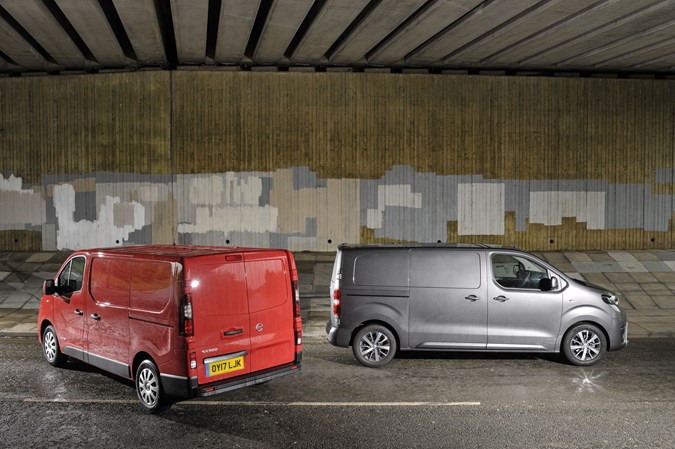
Since the Nissan NV300 and Toyota Proace were both introduced as all-new medium-sized models in 2016, we’ve brought them together to see how they compare.
Keep reading to find out which new five-year warranty van is best for your business – we’ve covered some fundamental details first, so if you want to jump straight to the twin test click here.
(The Hyundai iLoad also comes with a five-year warranty – but introduced in 2009 this is a much older van, and also one of the least practical in the medium van marketplace.)
Coats of many colours – how two vans represent many
Even if you’re not so worried about the warranty length, this is still an interesting comparison – not least because collectively the Proace and NV300 also represent five other current mid-size vans.
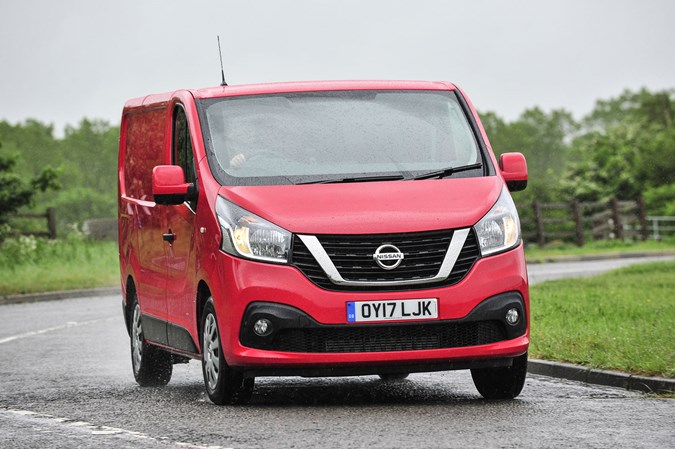
Remove the Nissan branding details, and the NV300 is the same van as the Renault Trafic, Vauxhall Vivaro and Fiat Talento, and is built by Renault in the Trafic plant in France.
Do the same to the Toyota Proace, and it’s otherwise identical to the latest Citroen Dispatch and Peugeot Expert – and is also built in the French duo’s factory in France.
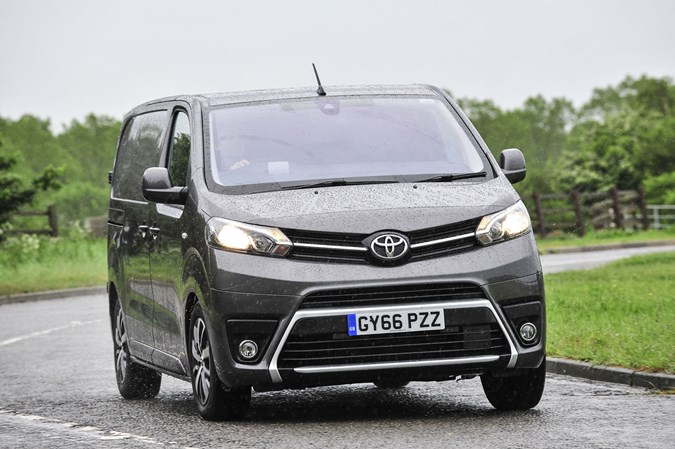
The respective manufacturers’ ranges aren’t necessarily identical, but the experience you get from the Toyota and the Nissan is broadly very similar to their not-quite-identical twins.
So if you’re looking for an alternative to the bestselling Transit Custom there is a lot you can learn from this twin-test.
When does the warranty length matter?
Strictly speaking, you aren’t going to be able to go any greater distance with theses five-year warranty heroes – for as per rivals, their warranties have an ultimate mileage cut-off of 100,000 miles.
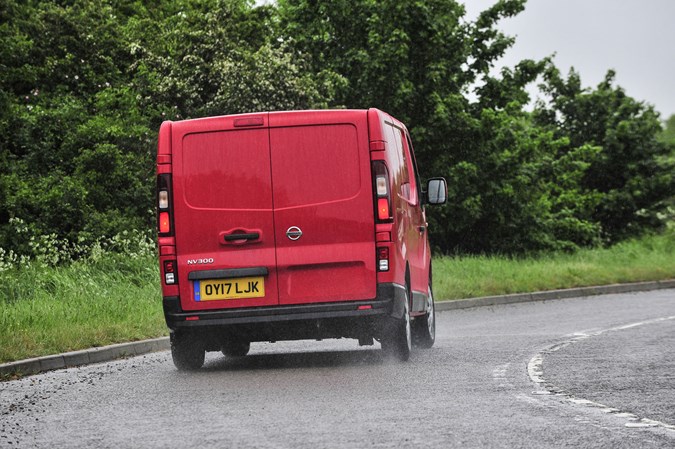
So having an extra couple of years cover isn’t going to help you too much if you do big distances and will hit this number within the first three.
However, if you’re a lower mileage user, intending to keep your new van as long as possible, that extra reassurance is surely a big win.
Nissan NV300 vs Toyota Proace – length and height choice
The NV300 is available in a fairly standard selection of panel van models: there are two body lengths (L1 and L2) and two roof heights (H1 and H2), each available in combination with the other.
The Proace is a little more unusual. Here you can choose between three body lengths – Long (L2), Medium (L1) and ultra-short Compact (L0) – but only a single roof height (though Long models are 25mm taller).
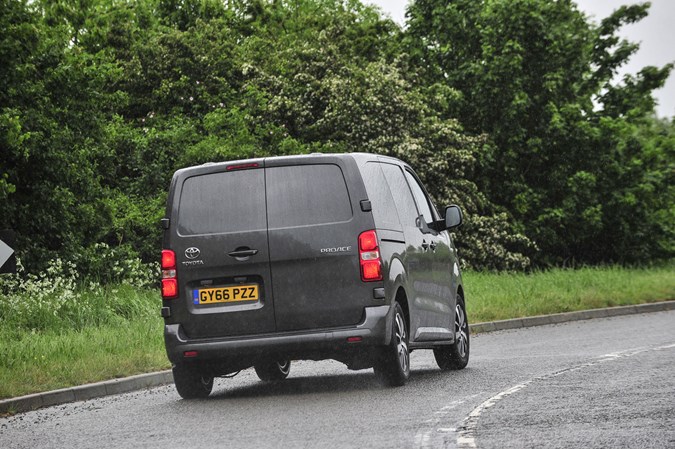
This gives the Nissan the ultimate advantage when it comes to load volume, with up to 8.6 cubic metres available from the L2H2 model, versus the Toyota’s 6.6 cubic metre max.
However, the Proace’s exterior dimensions – particularly its low 1,910mm height (1,935mm for the Long version), not to mention the super-short 4,609mm length of the Compact model – make it ideal for use in urban areas where a traditional small van wouldn’t be big enough.
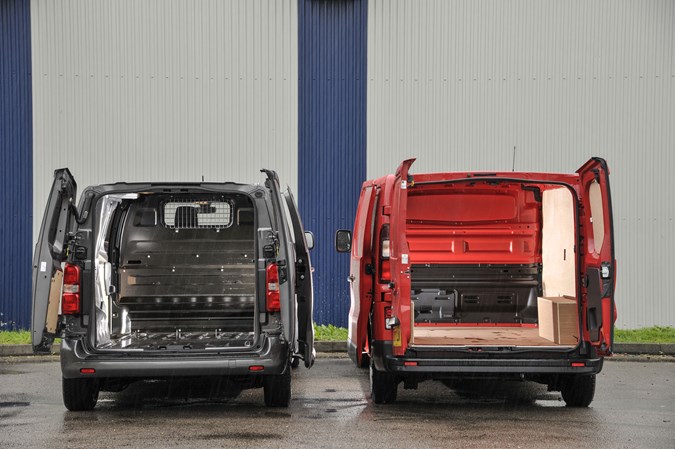
Especially since with a 5.1 cubic metre load volume the Compact nearly matches the 5.2 cubic meters available from the L1H1 NV300. The Toyota can also be very, very impressive when it comes to payload – but only if you go for a 2.0-litre engine. See our medium van payload guide for more details.
The NV300’s minimum roof height is 1,971mm, enough of a difference to start making us nervous about carpark height restrictors.
Best medium vans for payload – on Parkers Vans
Toyota Proace vs Nissan NV300 – engine choice
Nissan offers a choice of four 1.6-litre dCi turbodiesel engines; two single turbo units with 95hp or 120hp, and two twin turbo units with 125hp or 145hp. The latter pair are not only more powerful but also more fuel efficient with higher torque. A six-speed gearbox is standard.
The entry-level Toyota engine is also a 95hp 1.6-litre diesel, but it only comes with a five-speed gearbox. Above this is a 115hp version which gets a six-speed, and above this a 120hp 2.0-litre turbodiesel, also with a six-speed.
This area is one where the Proace differs from its Citroen and Peugeot cousins, too, as they both offer even more powerful engines, up to 180hp.
Nissan NV300 vs Toyota Proace twin-test – which models are on test?
The specific models we’re reviewing here are:
- Toyota Proace Comfort L1 with 115hp 1.6-litre diesel, £21,424 basic, £24,124 as tested
- Nissan NV300 Acenta L1H1 with 125hp 1.6-litre diesel, £23,740 basic and as tested
All prices exclude VAT.

Comfort is the top Proace trim level, but Toyota only does the Proace base model below it. Acenta is mid-spec in Nissan terms, with Visia below and Tekna above.
The difference in basic asking price is explained by the Nissan’s more powerful engine, which will haul an empty NV300 from 0-62mph in 10.8 seconds – 2.6 seconds faster than the Toyota’s 13.4-second time.
The reason for the reversal in as tested pricing is obvious as soon as you step into the cabs…
Toyota Proace vs Nissan NV300 twin test – standard equipment and cab environment
The NV300 Acenta is not a poorly equipped van, with key standard items including a Thatcham-approved alarm system, in-cab air conditioning, Bluetooth, DAB radio and rear parking sensors. However, it looks and feels very old-fashioned inside.
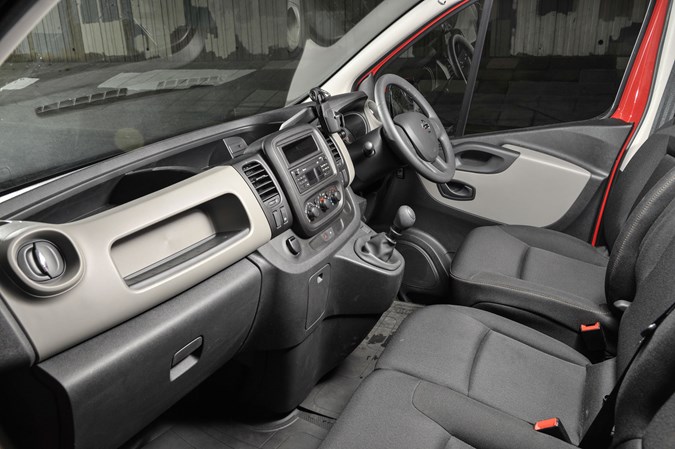
The Proace matches most of those standard items except for the alarm and parking sensors; you do get standard fit cruise control instead.
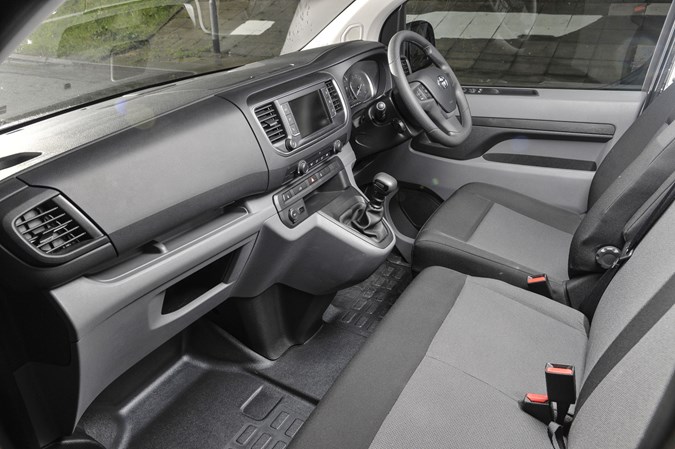
The sense of interior quality is much higher in the Toyota, and the dashboard is a far more modern design – if it wasn’t for the high seating position, you could be driving a car.
Setting this one further apart is the Toyota Safety Sense & Premium Pack, which adds a host of ultra-modern features, including a 7.0-inch touchscreen infotainment system, autonomous emergency braking, adaptive cruise control and even a head-up display.

You also get automatic lights and wipers, an alarm, cornering lights and 17-inch alloy wheels as part of the deal, so despite costing £2,246 it still seems tempting value.
But it’s not all good news in the Proace. The touchscreen never seems to work the first time you press on it, as if it needs waking up, the low roofline and high dashboard make the cabin feel claustrophobic, and worst of all, the driving position is significantly offset to the left. Which isn’t ideal if you do long journeys.
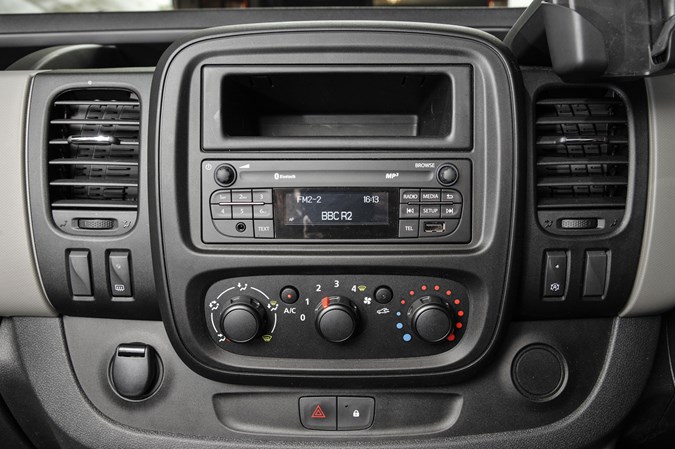
The Nissan is a distinctly more comfortable van in this respect, with greater adjustment in the steering and seating position for the driver, and clever touches including the giant mirror in the passenger sun visor, which is there to help with the blindspot on that side.

It also offers a generous amount of room for the middle passenger, whereas the Toyota practically demands radical lower limb amputation.
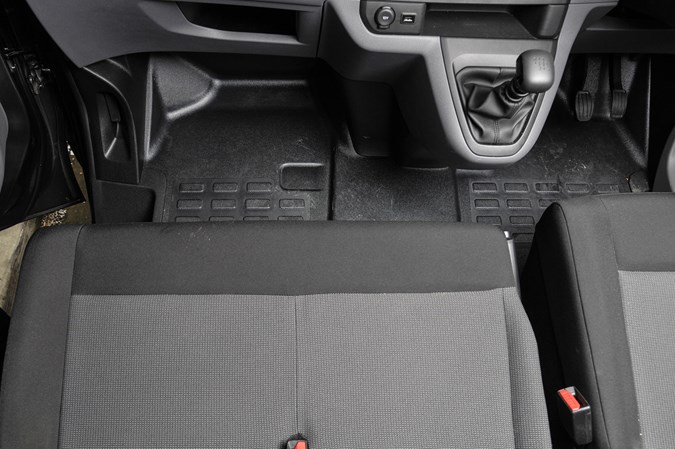
As such the Proace is really only an occasional three-seater, while the NV300 is a proper job. Shame there’s nowhere for the driver to put their clutch foot, though; the Toyota does have a wider footwell.

Neither model is particular generous when it comes to in-cab storage, but it’s the Proace that has more functional door bins.
Nissan NV300 vs Toyota Proace twin test – load area dimensions and payload
This table shows is a direct comparison between the two vans:
| Nissan NV300 | Toyota Proace | |
| Maximum load length | 2,537mm | 2,513mm |
| Maximum load height | 1,387mm | 1,397mm |
| Maximum load width | 1,662mm | 1,628mm |
| Width between wheel arches | 1,268mm | 1,258mm |
| Rear door opening height | 1,320mm | 1,220mm |
| Rear door opening width | 1,391mm | 1,282mm |
| Side door opening height | 1,284mm | 1,241mm |
| Side door opening width | 907-1,030mm | 935mm |
| Sill loading height | 552mm | 544-613mm |
| Load area volume | 5.2 cubic m | 5.3 cubic m |
| Gross vehicle weight | 2,820kg | 2,660kg |
| Payload | 1,081kg | 1,127kg |
| Maximum towing capacity | 3,500kg | 1,800kg |
As you can see, these two particular models are remarkably evenly matched – though the Proace’s payload advantage increases even further if you go for a 2.0-litre engine, up to nearly 1.5 tonnes. The most any NV300 variant can manage is just 1,280kg.

The raw figures aren’t the whole story, though. The Nissan impresses by including a standard bulkhead trapdoor to accommodate longer loads (up to 2,967mm) and no less than 14 load lashing points, both in the floor and on the side of the van.

In the Toyota you only get six, and the ‘Smart Cargo System’ load-though bulkhead is optional.
However, the Proace’s wheelarches seem much less intrusive, tucked away right to the sides, the space they leave is barely narrower than the rear door opening, making loading a doodle.
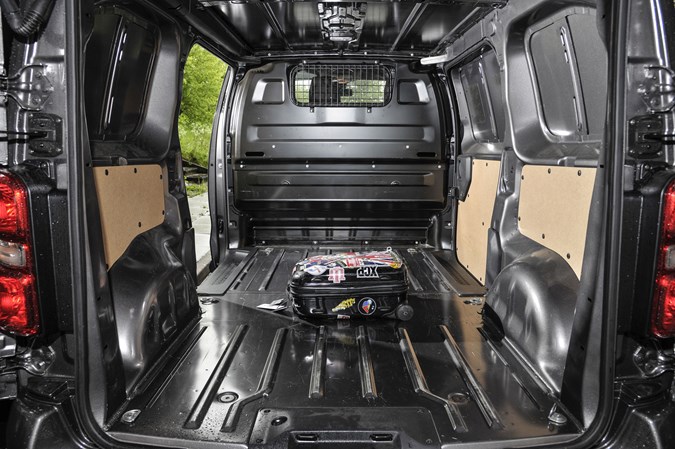
You also get more load height in the Toyota – despite the lower roof – a 12v socket in the load area, and two sliding side doors as standard to the NV300’s single one.
Toyota Proace vs Nissan NV300 twin test – driving experience
There’s really not much wrong with the way the Toyota Proace drives – assuming you can put up with the driving position.
Refinement is very good, with little engine, wind or road noise to bother you on the motorway, while the soft suspension makes it comfortable, even without anything loaded in the back.
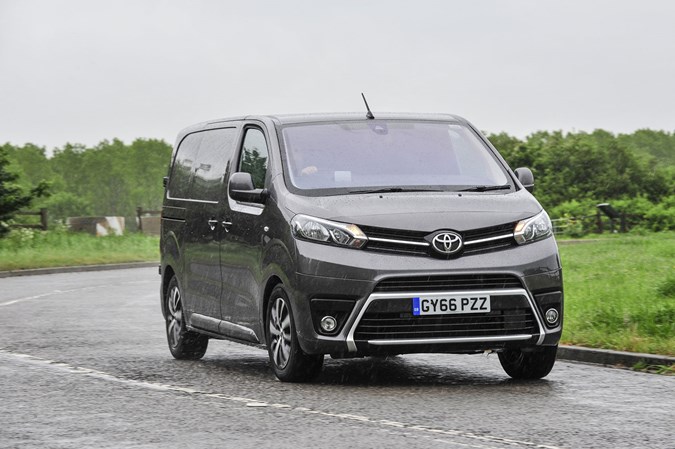
But visibility is limited by the narrow windows, high dashboard and single-lens mirrors, the gearknob is uncomfortably square for some reason, and the brakes have a little too much initial bite for our tastes, making it difficult to be smooth at lower speeds.
There’s also more body roll in the corners than you’ll find in the Nissan, and the steering is heavier at lower speeds, making it more tiresome.
The Nissan is a tad firmer on the behind, but not so much that it bothered us, especially since this helps keep it more upright when turning. The steering is light, but accurate, the brakes well calibrated and there is loads of grip – it feels an altogether more integrated machine.
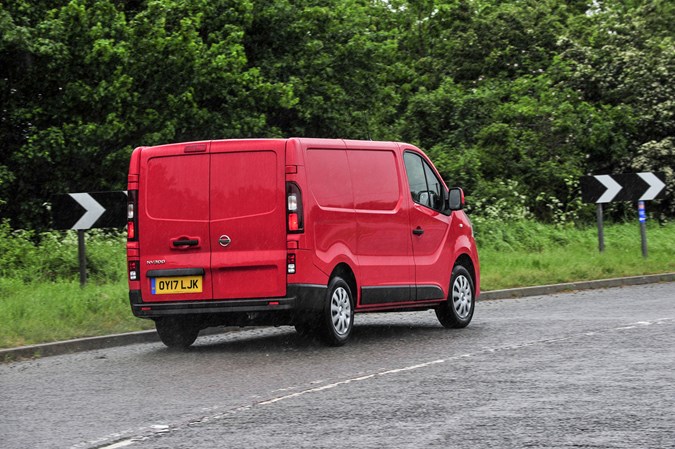
Combined with really punchy performance from the twin-turbo engine, this agility means you can drive it surprisingly quickly. As fun as a Transit Custom? Probably not, but it’s close.
Refinement is no issue either, and though the gearshift is occasionally notchy, overall we preferred it to the Toyota. Visibility is better, too, thanks to the larger windows and split-view door mirrors – though depending on where you sit the quarterlight windowframe may get slightly in the way.
Nissan NV300 vs Toyota Proace twin test – running costs
We’ve already established that both vans come with five-year warranties; they also match each other when it comes to service intervals, which are set at every 25,000 miles or two years, whichever comes sooner.
Toyota has 180 dealers,including 25 specialist LCV centres; Nissan has only 126 dealers but 57 of those are van specialists.
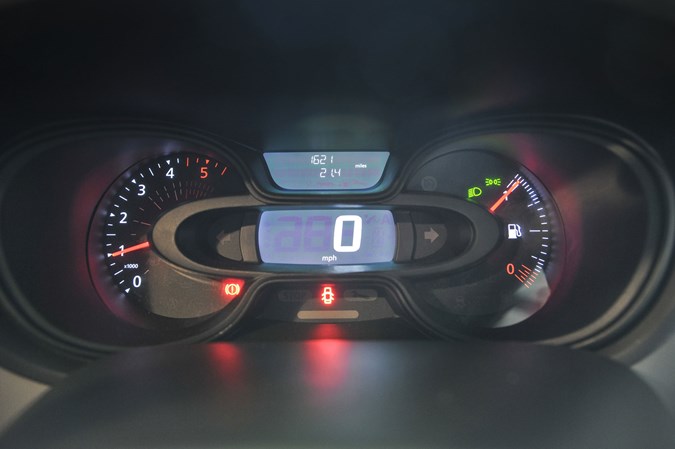
The Toyota kicks the Nissan’s ass when it comes to claimed fuel consumption, with the Proace officially returning 54.3mpg to the NV300’s 47.9mpg. In reality you’re unlikely to see either figure, but lightly loaded and driving at a cruise, both should be able to top 40mpg.
Both are Euro 6 compliant, meaning they have AdBlue tanks to keep the NOx emissions at bay; expect to get around 5,000 miles of driving in between top ups.
What Euro 6 means for vans and pickups
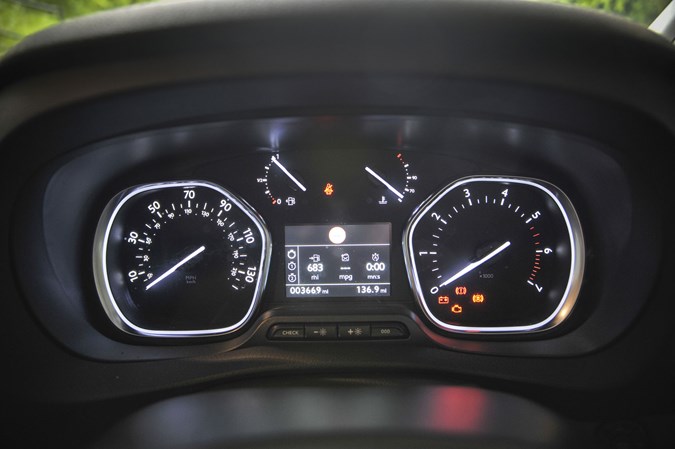
The Nissan claws back some ground when it comes to insurance, probably thanks to its lower cost. Our sample quotes are £398.18 for the NV300 and £466.01 for the Proace – so there’s not a great deal in it when spread over 12 months.
Insurance quotes are from mustard.co.uk and are based on a 46-year-old self-employed married male living in Hertfordshire with 9 years NCD and no claims or convictions. Insurance quotes will vary depending on individual circumstances.
Verdict
It’s a close one, and truth be told we believe you’ll be served well by either van.
The Nissan is better to drive, and has a more spacious cab, with better visibility and a much more comfortable driving position – all things that are important considerations if you regularly travel longer distances. It’s also the best choice if you often have three people on board.
The Toyota, however, is very refined, much more modern inside and out, and safer – it’s even been awarded five stars by the Euro NCAP crash test body. The twin sliding doors and longer, larger load area offer great practicality. The payload capability is impressive, too.
All of which makes the offset driving position incredibly frustrating – there is no way such a newly-designed van should treat its driver that way. We’d also trade a little of the tech inside for more storage in the cab, though the NV300 is hardly a paragon of virtue in this respect either.
In the end, though, unless you really need the small amount of extra space this particular Proace offers versus this particular NV300, the van we’d spend our money on is the Nissan.
Rivals to consider:
Ford Transit Custom – read the full review on Parkers Vans
VW Transporter – read the full review on Parkers Vans
Mercedes-Benz Vito – read the full review on Parkers Vans
Also read:
Most popular vans on sale in the UK
The UK’s most reliable vans listed
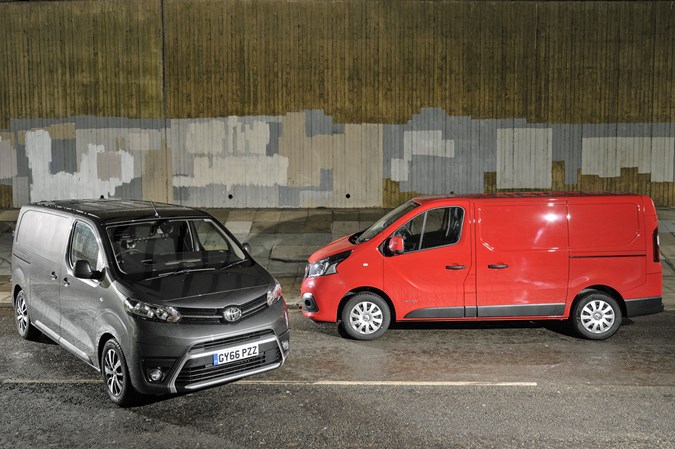
Just so you know, we may receive a commission or other compensation from the links on this website - read why you should trust us.

